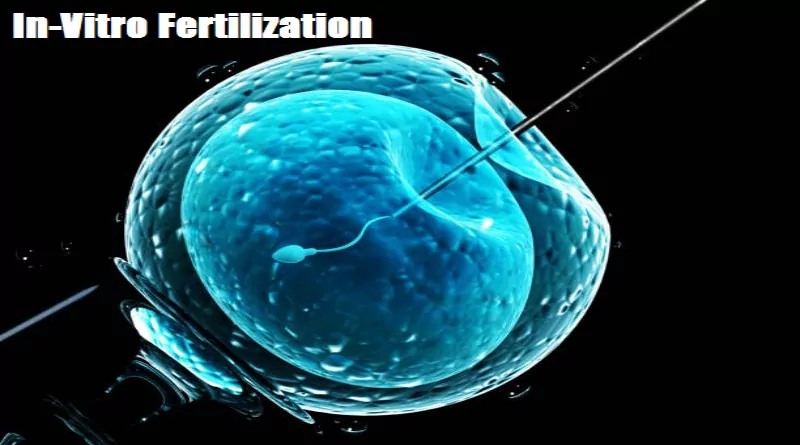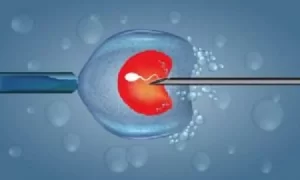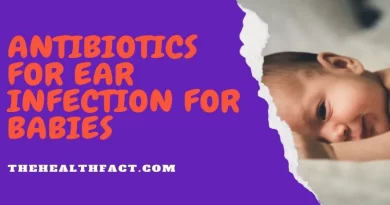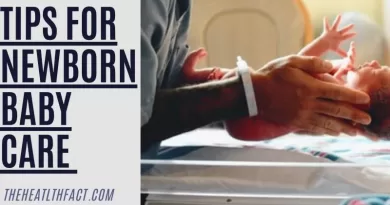In Vitro Fertilisation: How IVF Works
Table of Contents
Overview
In such a world where everything is advanced and possible, in-vitro fertilization gives you the opportunity for family planning even after being infertile or having any severe disorder, from which you want to escape your child. So, what is in-vitro fertilization, and in which conditions you can go for it?
What Is In-vitro Fertilization?
First of all, let me tell you the meaning of in-vitro. Well, you may be familiar with the term fertilization, a process of the mating of a woman’s egg and a man’s sperm. When the same happens outside of the living bodies, it is called in-vitro fertilization.
Vitro is a Latin word, which means “within the glass”, hence, when the egg and sperm are fertilized externally in a test tube, the process is called in-vitro fertilization.
The egg is taken from the woman’s ovaries and is fertilized with the sperm. The fertilized egg or the embryo can either be transferred to the woman’s uterus or can be frozen for storage. Although, IVF is an expensive process and maybe the last choice for people. There are few other methods apart from this, like fertility drugs and intrauterine insemination, a process in which the sperms are directly transferred to the women’s uterus.
People often try these methods before going to this invasive and advanced technology of family planning. Which can also be beneficial if the candidates are eligible for those procedures. While on the other hand, IVF provides you numerous options for the initiation of the process.
Also read: can you get vaccinated while breastfeeding?
Is it necessary that only the couples can donate their sperm or eggs? Not exactly, in some cases when one of the partners is not able to retrieve an egg or sperm due to some infertility issues, some other candidates can donate too. So let’s discuss how many options you get in IVF.
You can continue with IVF with the following options:-
- Your egg and your partner’s sperm
- Donor sperm and your egg
- Donor eggs and your partner’s sperm
- Donor sperm and donor eggs
- Or donated embryos
So, it’s an advanced technology which assures you to give you a child either from your gametes or donor gametes. But if there are other treatments then why do some people go for IVF? You might be thinking that they are rich. Of course not, because some conditions cause infertility and those conditions can’t be treated by drugs and intrauterine insemination. طريقة الربح في لعبة الروليت Let’s discuss those conditions.
In Which Condition IVF Is Recommended?
Reduced fertility:- women often lose their fertility after 40. After a certain age, the egg count decreases, and also the quality of eggs decreases, which may cause chromosomal abnormalities. After 40, women start approaching menopause. Hence, age and fertility are big factors.
Related article| Menopause pregnancy: is pregnancy possible after menopause
The same case is possible with men too. Due to some blockage of sperm delivery system or low sperm count and other dysfunction can bring them infertility.
Damaged or blocked Fallopian tubes:- the Fallopian tube is the location of the fertilization, and any damage or blocking will interfere in the meeting of gametes. Hence, it often results in infertility.
Reduction in ovarian function:- if the egg count is not enough or there is a scarcity of healthy eggs, then, is also a reason for choosing IVF.
Endometriosis:- Endometriosis causes inflammation and release of a chemical called cytokines. This chemical restricts fertilization and any scarring with endometriosis will lead to blocking the Fallopian tubes.
Uterine fibroid:- uterine fibroid impairs the gamete transport by restricting the Fallopian tubes.
Apart from these disorders, people also prefer IVF for certain other reasons:-
Genetic disorder:- if you or your partner has some genetic disorder and you are likely to inherit your child, you can use this peri-implantation technique. In which the doctors will analyze the embryo for possible genetic issues. And if the embryo is found to be free from genetic disorders, it will be transferred to the woman’s uterus.
As fertility preservation:- if someone is going to take cancer treatment like chemotherapy or radiation therapy, it may harm your fertility. Thus, IVF gives you a preservation option for fertility, which you can use in the future. Women’s eggs can be preserved in a frozen state or either the embryo can be preserved for future use.
The same is for men, their sperms can be preserved for a prolonged time, and used later. In case, if any of the candidates are not eligible to retrieve eggs or sperm, someone else can donate them their gametes.
Conclusion
In-vitro fertilization gives you an advanced method of family planning. It frees you from the stigma of infertility and gives you a chance to become a parent. Well, there are other methods too to treat infertility but after a particular age or condition the chances of effective fertilization decreases. That’s why a lot of people move to IVF as a safe and advanced method. In the current world, people are less aware of IVF, but hopefully, it can lead among those who are dealing with severe disorders and want to get a baby. Once again I would say, it’s not for everyone but for those who are not left with other options than this.
Frequently Asked Questions:-
What are the 4 stages of IVF?
The four stages of IVF include extraction of eggs, retrieval of sperms, fertilization, and last embryo transfer. But before retrieving the egg, women have to go through an ovarian reserving test that includes a blood test and a few hormonal evaluations such as Follicle-stimulating hormones, estradiol, and anti- Mullerian hormone. Males also get tested for their sperm count and motility before the process. Once you are accepted by the conception unit, both partners’ blood will be tested for HIV, hepatitis B, and C, along with cervical screening.
Are IVF babies twins?
Not all babies are twins, but yes the chances of twin babies get higher after IVF than normal fertilization. الرهانات الرياضية In normal fertilization, the chances are 6%, which turns up to 25% after IVF. The reason behind this, the number of embryos transferred to the uterus during the process. The highest cost of IVF is also the reason, per cycle costs thousands of dollars. Hence, often more than one good embryo is inserted into the uterus for higher chances of pregnancy.
Do IVF babies develop faster?
Yes, IVF babies grow faster and 57.5g heavier. A healthy embryo baby grew faster by birth about 7.2g per week. But the frozen embryo babies remain 171g lighter and 133g smaller than the normally developed child. In simpler words, we can say that the growth of a child is not too different in both IVF and normal fertilization.
What percentage of fertilized eggs make it to Day 5?
Only 30-50% of the eggs survived for 5-6 days, at the blastocyst stage. Hence, egg transfer at the blastocyst stage is done to get a better idea about the quality of the embryo.
How many days rest after IVF?
The first 24 hours is critical after the embryo transfer. It is that phase when the embryo will attach to the uterine wall, to fully implant itself. The implantation will take several days, till then the mother should take rest for 2-3 days. Although, you don’t have to sit in a certain way after the procedure, or not in a particular position. So, chill for some days.
How many days rest after egg retrieval?
After the egg retrieval, you may have cramps, a feeling of fullness, and pressure. Well, this is quite normal after the extraction of eggs. Hence, take a rest for 3 days after you are done for egg retrieval. Talk to your doctor if you experience trouble in eating and drinking, excessive pain, or feel a fever. Your retrieved egg will then be incubated for 5-6 days in the laboratory. So, till then you get normal again.
Can ICSI cause twins?
ICSI is used with in-vitro fertilization. When the sperm is not capable of penetrating the egg by itself, then it is manually injected with a micropipette into the egg. This process is called intracytoplasmic sperm injection. Thus, the penetration is done with single sperm; the chances of twins are less than IVF without ICSI. while the chances are 50% for multiples, reduces to 30-35% in IVF with ICSI. Hence, you will less likely get twins after ICSI.
What is the in-vitro fertilization success rate?
The success rate of IVF is 40% in young women. The chances of success get higher in women younger than 35. For successful outcomes, it uses assisted reproductive technology that includes IVF, GIFT, ZIFT but the IVF procedure is commonest among all. However, there is no exact success rate we can conclude. It depends on your age, the condition of your gametes. If you are older than 35 your ovaries might not be that healthy as they were earlier. So, in this case, multiple embryos are transferred to get the implantation done.
How many eggs can be transferred in IVF? رهان مباشر
As we have discussed, it depends on your age and ovarian health. In the UK around half of the procedures require the transfer of two embryos, while 23% of IVF procedures require 3 and 10% require 4 or 5 embryos. However, every one out of three IVF pregnancies results in twins. Around 60% of the IVF deliveries were before time, as compared to the delivery from a single fetus.
Can 1 embryo become twins?
Yes, only a single embryo could result in twins. Although, the chances are rare but not impossible. A single embryo transferred to the uterus can result in twins or triplets sometimes. This condition is called “monozygotic twins”. That means two fetuses with a single embryo transfer. It can result after splitting of embryos after transfer.





